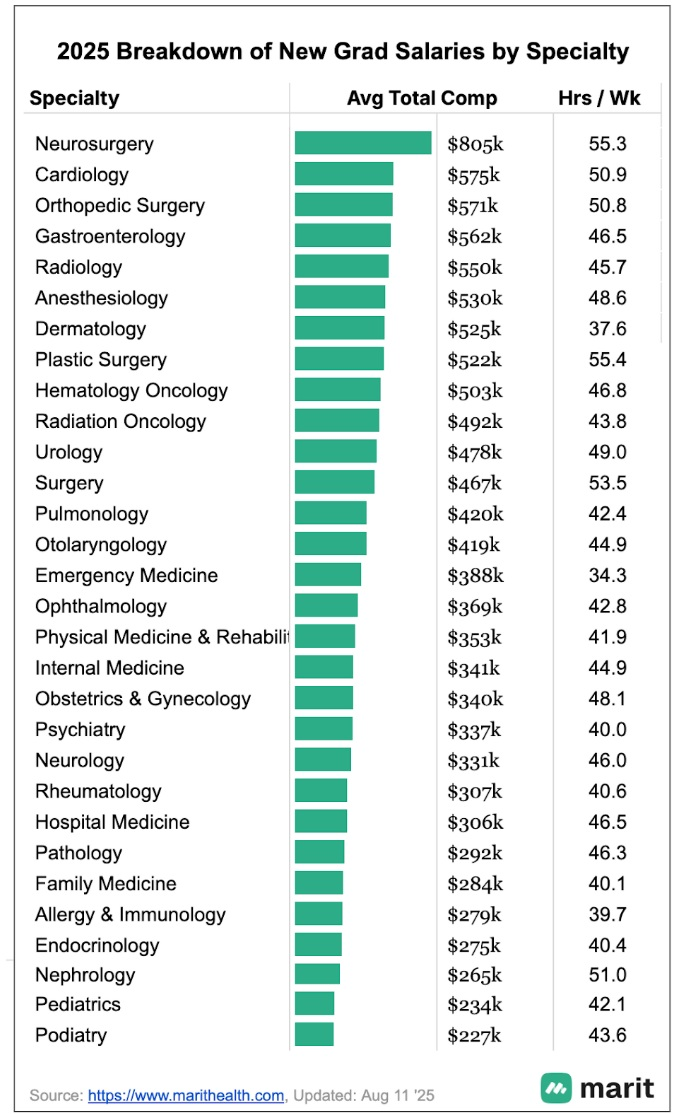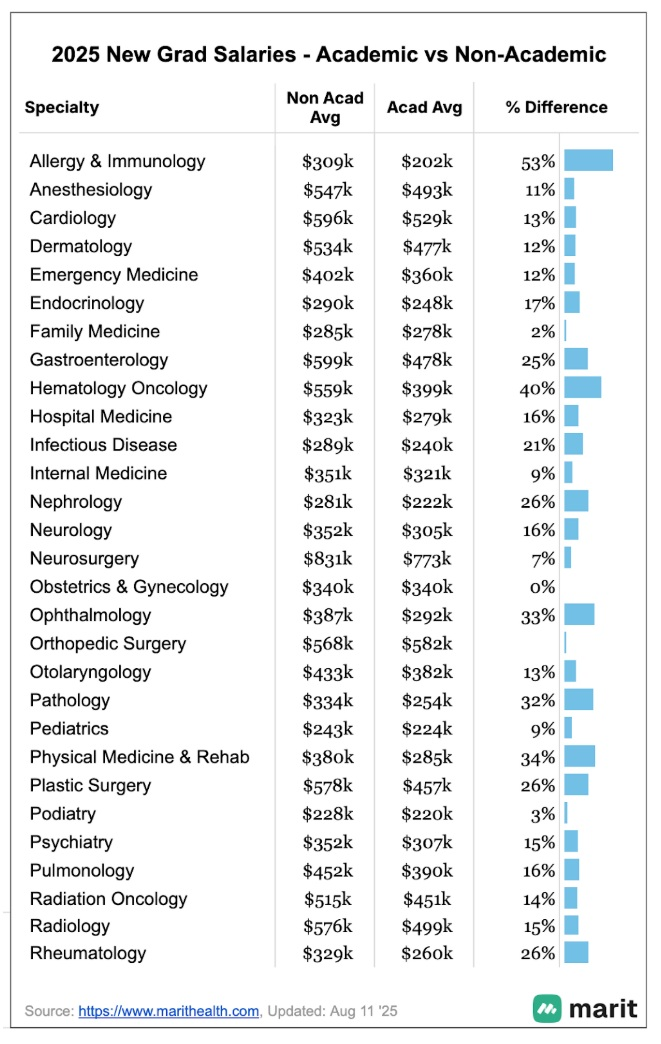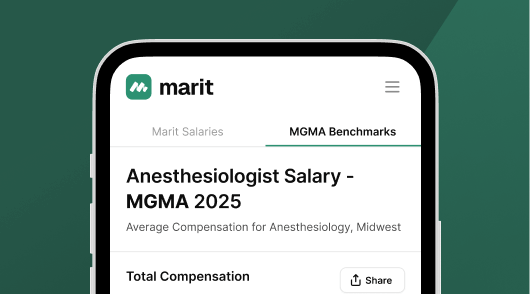The transition from residency or fellowship into your first attending job is one of the biggest leaps of your career. After years of training, you are suddenly navigating contracts, benefits, and compensation packages that can feel overwhelming. And for many, this is when theoretical earnings become real, with lasting implications for your path ahead.
Most physicians enter their first contract negotiations at a significant disadvantage. Employers and recruiters come armed with years of data on market rates, benefits structures, and negotiation tactics, while physicians completing residency are often seeing these numbers for the very first time. That imbalance creates an uneven playing field where employers hold the leverage and young doctors are left guessing what’s fair. The stakes are highest at this stage, because your very first contract doesn’t just determine your initial paycheck; it sets a financial baseline that can ripple through your entire career.
That is exactly why we built Marit: a clinician-run community that makes salary data freely accessible. Thousands of your peers have already contributed anonymous compensation details - including base pay, bonuses, benefits, and schedules - so you can walk into your first contract negotiation with facts, not guesswork.
Why New Grad Salaries Deserve Their Own Lens
Most published benchmarks lump everyone together – an orthopedic surgeon with 20 years in private practice is grouped with others just stepping out of fellowship. This is misleading because early-career pay follows its own rules.
- Guarantees are more common. Employers often offer guaranteed base salaries for the first one to two years before transitioning to productivity models. These guarantees can provide important financial stability during the transition out of training, but they may not reflect long-term earning potential.
- Partnership tracks change the math. Many private practices hire new physicians with the expectation of eventual partnership. During the “associate” years, base pay is often lower than market value, essentially serving as a buy-in to the group. Once partnership is reached, however, compensation can increase substantially through profit-sharing or equity, making the early sacrifice worthwhile for those who plan to stay long-term.
- Sign-on money carries weight. Bonuses, relocation support, and loan repayment can significantly shift a first-year package. In some cases, these one-time payments can make the difference between two offers that appear similar on salary alone.
- Schedules are different. New graduates may shoulder heavier call or extra shifts, which changes both compensation and lifestyle. The tradeoff between added income and work-life balance is especially important to evaluate early, before it becomes an expectation.
Without breaking salaries out by experience, averages can obscure the reality of what new physicians actually take home in their first job.
How Much Do New Physicians Earn?
Using data shared on Marit, here is what first- and second-year attendings are reporting:
- Top paying specialties: Neurosurgery ($805,000), Cardiology ($575,000), Orthopedic Surgery ($571,000)
- Lowest paying specialties: Pediatrics ($234,000), Podiatry ($227,000), Nephrology ($265,000)

Alongside pay, new graduates report working anywhere from roughly 45 to 65 hours per week, depending on specialty. That context matters: a “high” salary in one field may still translate into lower hourly earnings compared to another specialty with lighter schedules.
The Academic vs. Non-Academic Gap
One of the biggest drivers of salary differences is practice setting. Across specialties, non-academic roles pay substantially more (sometimes by 30% to 50%) largely due to higher clinical loads and fewer non-clinical responsibilities.
For example - Allergy & Immunologist salaries in non-academic settings average 53% higher than academic settings. Hematology/Oncology salaries average 40% higher in non-academic settings, and PMR salaries are 34% higher.

Why Starting Off on the Right Foot Matters
A first job is more than just a paycheck – it’s the launchpad for your entire career.
- Future pay raises often build on the starting point. Employers may use your initial contract as a baseline, so negotiating even a modest increase early on can compound into six figures over time.
- Contract terms set lasting precedent. Clauses around non-competes, call schedules, or productivity expectations can influence career mobility and flexibility for years.
- Lifestyle patterns stick. The call burden, hours, and clinical load accepted in the first job can easily become the “new normal.” Choosing carefully can mean the difference between thriving and burning out.
- Student debt creates financial pressure. With average student loan balances often in the $200,000 to $300,000 range, the terms of a first contract can influence how quickly you can make progress on repayment. A slightly higher starting salary or direct loan assistance from an employer can shave years off a debt repayment timeline.
In other words, a first contract is not just about year one; it helps set the foundation for future earnings, career growth, and the kind of balance that allows physicians to build a fulfilling and sustainable career.
Up next: In part 2, we’ll dig into sign-on bonuses and relocation allowances, often the most negotiable parts of a first contract.


